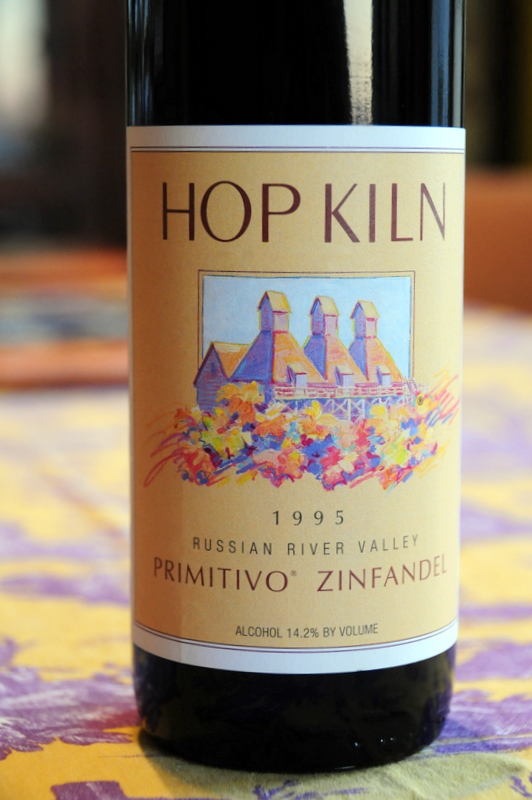Our good friend, Chris, brought this bottle of 1995 Hop Kiln Primitivo Zinfandel to a dinner party that we held recently. It is already 2011, so this zin was old! That made it particularly intriguing, as there’s a lot of controversy around whether or not zins can age and thereby improve.
Chowhound has a long debate weighing in on this issue. I really appreciated the comment that zins that they tried “needed some time after getting out of the bottle to pull themselves together” as I thought that the Hop Kiln was a bit over-acidic just out of bottle but opened up wonderfully after it was given about twenty minutes to breathe.
Suite101 interviewed a California Central Coast zinfandel producer who reports that after a few years, zins take on claret-like characteristics. I can sort of see that after trying this bottle as it had a distinctly cedar nose. That site goes on to describe in painstaking detail how zinfandels age, if you’re interested in more.
Professor Bainbridge put in his two-cents, saying that some zinfandels can age; others, not so much. Tim Fish from Wine Spectator agrees. He goes on to write, “Bold and youthful fruit are what Zins are all about.” Thus, I guess, that one should conclude that they are to be drunk fairly young.
So I really don’t know. Is the wine supposed to do something over time? Or maybe I can just enjoy my wine without fussing too much? I like young zins a lot and this ancient-in-dog-years bottle was excellent, too.
Another issue about this bottle: what do they mean by “primitivo zinfandel?” Winegeeks tackles the primitivo versus zinfandel question but concludes ambiguously. Is Primitivo the Italian version of Californian zinfandel, are these kissing cousins, or what? It seems that the jury is still out on that one.
Whatever the specialists say, this wine was good. A bit disorganized first out of the bottle, it opened up beautifully. It was a transparent cherry red color with a delightful fruity bouquet with garrigue and cedar. It had medium body with lots of powerful mineral notes and some sour cherry on the finish. One taster exclaimed, “It’s true, it does get better.”
